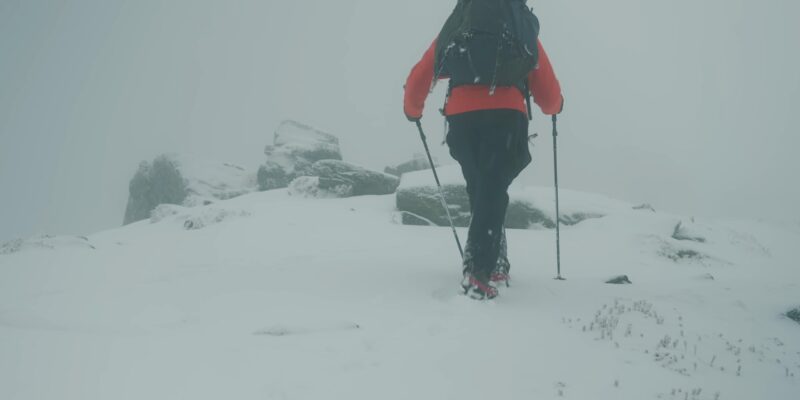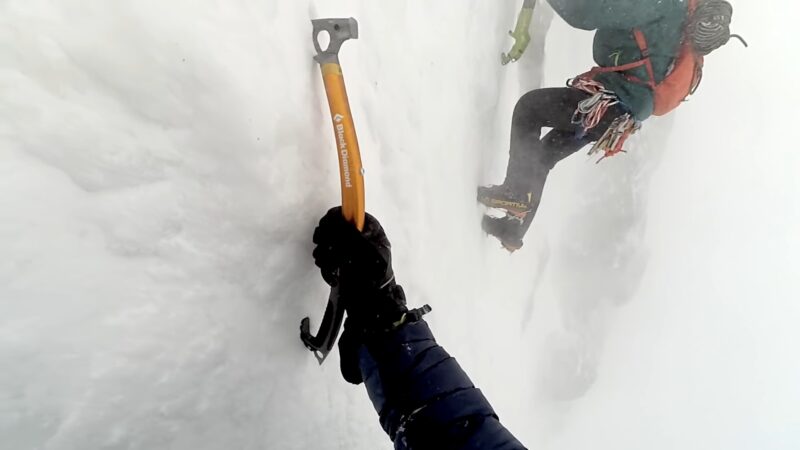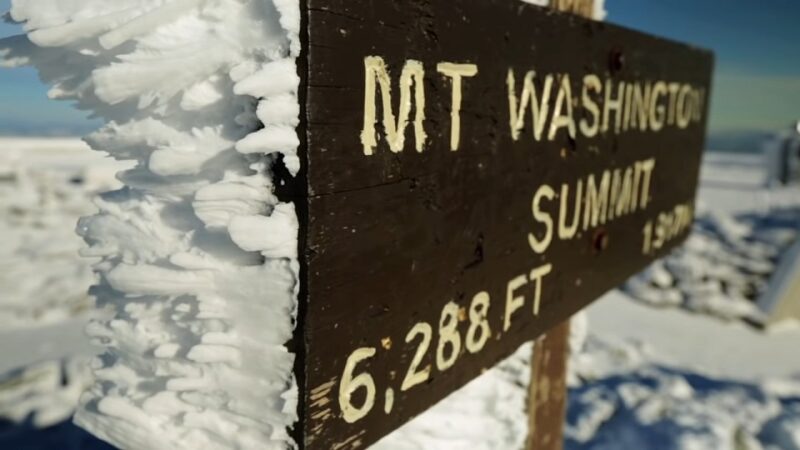Mount Washington, the highest peak in the northern Appalachians at 6,288 feet, is renowned for its stunning vistas and demanding hikes. Yet, it’s also known for sudden, severe weather changes, making it a perilous climb.
Recognizing the hazards is essential for climbers. Frequent accidents and deaths on the mountain underscore the need for thorough preparation and respect for its capricious weather.
Learning from past tragedies helps hikers approach Mount Washington with the necessary caution and readiness.
Statistics on Fatalities
Mount Washington, a towering figure in the White Mountains of New Hampshire, has been the site of 161 recorded fatalities since the keeping of such records. This number serves as a solemn testament to the inherent dangers of the mountain.
Hikers venturing onto its slopes must proceed with the utmost caution, recognizing that the mountain’s beauty is matched by its potential peril.
Causes of Fatalities

The reasons behind these tragedies are diverse, reflecting the multifaceted challenges Mount Washington presents. Falls from its cliffs, hypothermia due to its notoriously fickle and harsh weather, and heart attacks amidst the physical strain of the ascent are the most common causes of death.
Each fatality is a poignant reminder of the mountain’s demand for respect, the necessity of proper preparation, and the importance of heeding the mountain’s warning signs.
Comparative Analysis
In a comparative context, Mount Washington’s fatality rate is alarmingly high when measured against other mountains across the globe. The number of deaths per vertical foot climbed is greater here than on many other peaks.
This alarming statistic underscores the unique risks associated with Mount Washington and highlights the critical need for climbers to have a deep understanding of the mountain’s specific dangers and to prepare accordingly for its challenges.
Factors Contributing to the Danger
A Challenging Endeavor

Huntington Ravine Trail is known as one of the most difficult and dangerous trails in the White Mountains. It features a steep section involving class 3 scrambles, where a fall could be fatal.
The trail requires a full day’s commitment and is not recommended for descent due to its exposure and the risk of slippery rocks in rain or fog. The challenge of navigating such treacherous terrain, combined with the mountain’s severe weather, adds to the inherent dangers of hiking in this area.
The Impact of Poor Preparation and Gear
Proper preparation and gear are essential for a safe hiking experience. Inadequate preparation can lead to poor decision-making, while inappropriate or insufficient gear can leave hikers vulnerable to the elements and terrain.
Experts advise carrying the Ten Essentials, which include navigation tools, extra food and water, and a first-aid kit, among other items. Additionally, safety planning and preparation are crucial for responding to emergencies and mitigating risks.
Hikers should always check the weather forecast, wear proper attire and footwear, and communicate their plans with others to ensure a safe journey.
Notable Incidents
Mount Washington has a long history of notable incidents, many of which have been fatal due to the mountain’s severe weather conditions and challenging terrain. The mountain is one of the deadliest in the continental United States, with more fatalities per vertical foot than any other mountain in the world.
Here are some of the incidents that highlight the dangers of Mount Washington:
- Frederick Strickland (1849): One of the earliest recorded fatalities was that of Frederick Strickland, who died of hypothermia in Clay Brook.
- Lizzie Bourne (1855): Lizzie Bourne tragically succumbed to hypothermia near the summit during a sudden storm.
- William Seely (1873): William Seely’s life was lost in an accident on the Cog Railway.
- Sewall Faunce (1886): A young Sewall Faunce died after falling through a snow arch in Tuckerman Ravine.
- Kate Matrosova (2015): An experienced hiker, Kate Matrosova, perished after being caught in extreme weather conditions during an attempt to complete the Presidential Traverse.
- Francois Carrier (2023): Francois Carrier went missing after setting out on a hike in inadequate attire, with search efforts ultimately called off.
These incidents serve as sobering reminders of the risks associated with hiking Mount Washington. The New Hampshire Fish and Game Department conducts an average of 200 rescues a year for hikers in need of assistance.
Hikers are urged to respect the mountain’s unpredictable weather and to prepare adequately before attempting any trails. By doing so, they can help prevent future tragedies and ensure their safety.
FAQ
What is the best time of year to hike Mount Washington?
The best time to hike Mount Washington is typically from late spring to early fall. Summer months offer more stable weather conditions, but hikers should always be prepared for sudden changes.
Are guided tours available for Mount Washington hikes?
Yes, guided tours are available and recommended for inexperienced hikers. These tours provide expert guidance and insights into safely navigating the mountain’s terrain and weather conditions.
What should I do if caught in a storm on Mount Washington?
If caught in a storm, seek shelter immediately, stay warm and dry, and avoid exposed ridges. Always carry a map and compass for navigation in case GPS fails.
Is Mount Washington suitable for beginner hikers?
Mount Washington can be challenging for beginners due to its steep trails and unpredictable weather. Beginners should start with shorter, less challenging trails and consider guided hikes.
Can I camp on Mount Washington?
Camping on Mount Washington is allowed in designated areas, but it’s crucial to be prepared for harsh weather conditions. Check regulations and obtain necessary permits in advance.
Are there any training or preparation courses for hiking Mount Washington?
Yes, there are courses and workshops available for hikers looking to prepare for Mount Washington. These often cover mountain safety, weather awareness, and emergency response skills.
Final Words
Mount Washington, standing at 6,288 feet in the northern Appalachians, is not only known for its breathtaking views and challenging hikes but also its sudden and severe weather shifts, making it a hazardous climb. In contrast to mountains such as Yosemite, which have fewer recorded fatalities, the dangers of this particular mountain are evident with a tally of 161 deaths.
Causes of death range from falls, and hypothermia, to heart attacks, reflecting the mountain’s diverse challenges. Its fatality rate per vertical foot is notably high compared to other global peaks, emphasizing the need for thorough preparation and respect for its unpredictable weather.
Hikers must be well-prepared, carrying essential gear and understanding the risks, to safely navigate Mount Washington’s treacherous trails and capricious climate.
